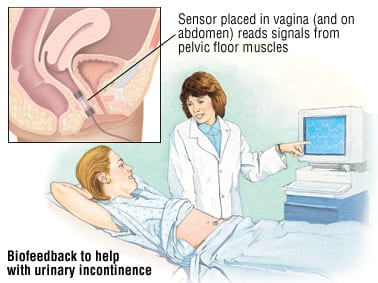Harnessing the Potential of Bio Feedback to Revolutionize Persistent Discomfort Management and Improve Quality of Living
Harnessing the Potential of Bio Feedback to Revolutionize Persistent Discomfort Management and Improve Quality of Living
Blog Article
Persistent pain is a condition that impacts millions of individuals around the world. It can be triggered by various factors, including traumas, illnesses, or even anxiety. For many patients, managing chronic pain can be a constant struggle that affects their quality of life. Traditional treatments often consist of drugs, physiotherapeutic therapy, and sometimes surgery. However, these approaches do not always provide the relief that patients seek. Recently, biofeedback has surfaced as a promising option for controlling chronic pain and enhancing overall well-being.
Biofeedback is a technique that educates patients how to control specific bodily functions by utilizing signals from their own bodies. This method includes employing sensors that monitor physiological functions such as heart rate, muscle tension, and skin temperature. By offering real-time feedback, individuals can learn to recognize their body's reactions to pain and stress. This awareness allows them to formulate strategies to manage their pain more efficiently. For example, if a patient notices that their muscle tension rises when they are in pain, they can utilize relaxation strategies to help reduce that tension.
One of the primary benefits of biofeedback is that it enables individuals to take an proactive role in their pain control. Instead of depending solely on drugs or treatments from medical providers, individuals can learn to comprehend and regulate their own physiology. This feeling of control can lead to enhanced confidence and a more positive outlook on life. Many patients report feeling more in control of their pain and less like sufferers of their syndrome. This change in perspective can substantially improve their standard of life.
Studies has demonstrated that biofeedback can be beneficial in alleviating chronic pain indicators. Research suggest that patients who use biofeedback techniques often experience less pain and improved physical function. Additionally, biofeedback can help reduce anxiety and stress, which this link are common issues for those living with chronic pain. By addressing both the physical and emotional aspects of pain, biofeedback offers a holistic approach to pain management. This comprehensive method can lead to better outcomes for individuals, allowing them to participate more fully in their daily activities.
In summary, biofeedback is a significant tool for revolutionizing chronic pain control. By educating patients to comprehend and regulate their physiological responses, biofeedback empowers patients to take control of their pain. This approach not only helps reduce pain but also improves overall quality of life. As more people look for options to traditional pain management methods, biofeedback emerges as a potential option. With continued research and awareness, biofeedback could turn into an integral part of chronic pain therapy, helping patients lead more fulfilling, more fulfilling lives.